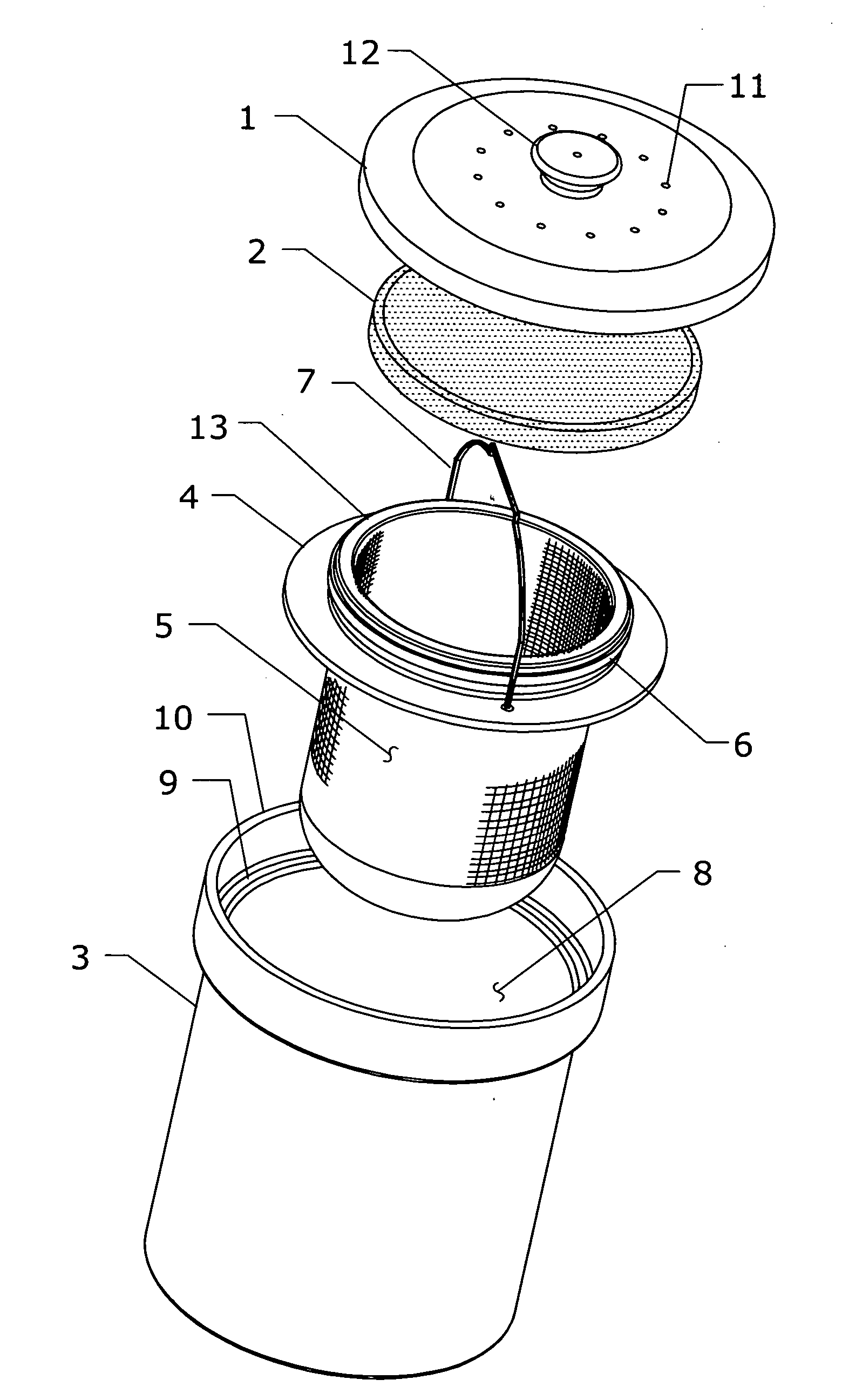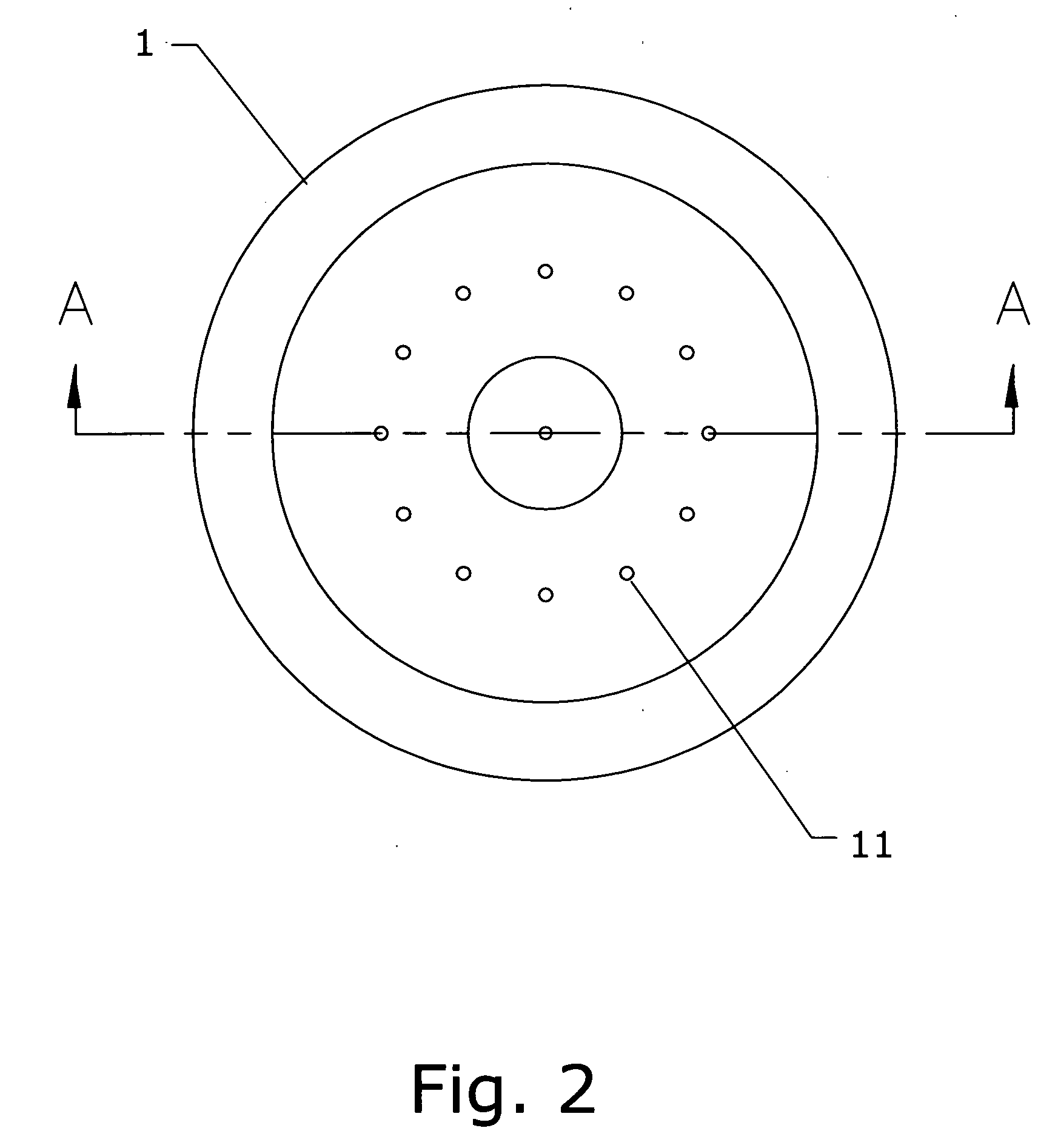Device and method for collecting of organic waste
a technology for collecting organic waste and devices, applied in the field of devices and methods for collecting organic waste, can solve the problems of affecting the aeration process, and being too complex for consumers to adopt, and achieve the effect of convenient operation
- Summary
- Abstract
- Description
- Claims
- Application Information
AI Technical Summary
Benefits of technology
Problems solved by technology
Method used
Image
Examples
embodiment
PREFERRED EMBODIMENT
Operation
[0059]When the device is in use, it is assembled as shown in FIGS. 1-3 and as described in PREFERRED EMBODIMENT: DETAILED DESCRIPTION above. When the assembled device is empty, air reaches the inside cavity of the rigid container through the pores in the mesh like material of the biodegradable bag. The organic waste is deposited into the biodegradable bag by lifting the lid that is lined with a filter. As the lid is lifted to deposit more organic waste, the organic waste that is already present in the device is exposed to air in the outside environment. Additionally, air that is present in the inside cavity of the rigid container is exchanged with the outside air through the mesh like material of the biodegradable bag that is not yet covered by organic waste. In this manner, along with the gradual exchange of air through the filter in the lid, the organic waste contained in this device is exposed to air from the outside environment. As compared to other ...
PUM
| Property | Measurement | Unit |
|---|---|---|
| Weight | aaaaa | aaaaa |
| Size | aaaaa | aaaaa |
| Transparency | aaaaa | aaaaa |
Abstract
Description
Claims
Application Information
 Login to View More
Login to View More - R&D
- Intellectual Property
- Life Sciences
- Materials
- Tech Scout
- Unparalleled Data Quality
- Higher Quality Content
- 60% Fewer Hallucinations
Browse by: Latest US Patents, China's latest patents, Technical Efficacy Thesaurus, Application Domain, Technology Topic, Popular Technical Reports.
© 2025 PatSnap. All rights reserved.Legal|Privacy policy|Modern Slavery Act Transparency Statement|Sitemap|About US| Contact US: help@patsnap.com



